Source: http://blogs.lse.ac.uk/impactofsocialsciences/2016/04/05/nine-things-university-administrators-and-academics-need-to-know-about-copyright/
Nine things you need to know about copyright: A good practice guide for administrators, librarians and academics.

 It
Itis impossible to work in a university and avoid coming into contact
with copyright at some point, especially given the ease with which
online content can be copied, pasted, streamed, downloaded and shared. Chris Morrison and Jane Secker provide a helpful explainer of copyright in universities and break down the complexity of how copyright works in practice.
The Association of University Administrators (AUA)
have just published our good practice guide to copyright. Our intention
with the guide was to avoid plunging straight into the technical
explanations of how copyright works and instead start off with a
conversational explanation of the way in which copyright is experienced
in educational establishments. We then thought it would work if we
followed this with an explanation of the practical steps that
professional services staff can take to do the right thing in what can
sometimes be a confusing and worrying environment.
The whole document can be read online here, and downloaded by AUA members here, but
this blog post provides a brief summary of the 9 things we think every
university administrator (and in fact anyone who works with copyright
material) should know about copyright:
Nine Things You Need to Know About Copyright
- Copyright covers all fixed, original expressions of human knowledge and creativity for a limited time
expression as recorded in a ‘fixed’ form (i.e. written down, recorded or
saved to digital media). These are known as copyright ‘works’ and they
include books, music, art, software, scholarly publications, films and
broadcasts. Protection for copyright works is automatic (i.e. it doesn’t
need to be registered), but lasts for only a limited time so older
works go out of copyright and pass into the ‘public domain’(for more
detail see the FAQs). The first copyright law was the Statute of Anne,
introduced into British law in 1709 and its creation was prompted by the
invention of the printing press and the need to regulate copying of
literary works. The first words of the Statute said that it was “an act
for the encouragement of learning” and even though copyright law has
changed a great deal since then, it still has a major impact on those
working and studying in education establishments. Copyright is the legal
mechanism that governs the production, consumption and sharing of human
knowledge and creativity within the industrialised global economy. If
education and research is about ideas and the application of them to the
needs of other humans and wider society, it is easy to see why it’s
impossible to work in a University and avoid coming into contact with
copyright at some point.
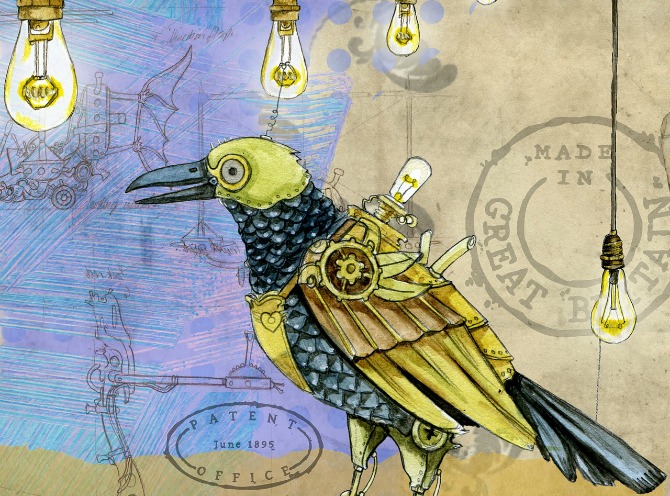 Image credit: Engineering Patent by ArtsyBee Public Domain
Image credit: Engineering Patent by ArtsyBee Public Domain
- It exists on the internet
internet. This is an understandable (and perhaps convenient) conclusion
to reach, given the ease with which online content can be copied,
pasted, streamed, downloaded and shared. However copyright laws
throughout the world were updated around the year 2000 to clarify that
making text, images, software, music, or anything else protected by
copyright available on the internet, or even a closed computer network,
is subject to copyright law. This has created a tension throughout the
world.
In the old days before the invention of the World Wide Web we could
get away without encountering copyright to any great extent. It was the
preserve of professional artists/creators, media/publishing companies
and other large organisations who could afford to produce and distribute
creative works on a large scale. Universities were generators of
copyright material, but this was largely about producing content for
distribution by traditional publishing companies who handled the legal
considerations. University librarians began to become more aware of
copyright with the introduction of photocopiers and other reprographic
technology in the 1970s and ‘80s. Now every administrator has access to a
super-fast, global, decentralised copying machine (i.e. the Internet)
in which content can be pulled from, pushed through, processed and
stored without having to ask anyone’s permission. However acquiring or
sharing copyright content online without the permission of the copyright
owner is risky, unless you understand the implications of these actions
and take care.
- Copyright governs certain types of ‘usage’ of copyright works
of things which you cannot do with it unless you have the copyright
owner’s permission. These activities are described in UK copyright law
as ‘restricted acts’ and the most obvious of these is the act of
copying. The other restricted acts are described in more detail in the FAQ section
and they cover the vast majority of things that someone might want to
do with a copyright work, including publication, performance, sharing or
acquiring online, renting and adapting. In short, if you want to use a
copyright work in a way that is restricted by copyright, you need to
have the permission of the copyright owner.
- There are resources you can use without asking for permission
which copyright content can be, and is used widely, by those at
educational institutions without getting into trouble. When copyright
owners give permission for others to use their works, they do so under a
legal agreement called a licence. A licence can take many forms, but in
essence it says that someone (or a group of people) can do certain
things with the work (or works) for a certain period of time, possibly
in a specific place and sometimes for a fee.
Universities hold a great many licences which allow the legal use of
large collections of copyright material. For example University
libraries purchase subscriptions to electronic journals and e-books, IT
departments purchase software and the institution is likely to hold a
range of ‘blanket’ licences from a ‘collective management organisation’
such as the Copyright Licensing Agency (CLA). These blanket licences
allow copying and use of whole classes of work, such as published books
and journals, and represent a significant investment for Universities to
ensure legal use of copyright content. It is likely that there is
someone responsible for copyright in your Institution who can advise on
these. Additionally, or alternatively, there may be other named
individuals or teams who are responsible for the administration of these
licences and can advise on whether and how they apply to what you are
doing.
Although the licences described above mostly involve payment and are
relatively restrictive, the open and shared nature of the internet has
led to development of a range of ‘open’ licences which promote
permissive use of copyright works. The most famous of these are the
Creative Commons licences conceived by American lawyer and activist
Laurence Lessig. These licences are described in more detail in the FAQ section,
but works made available under Creative Commons licences provide a
hugely valuable resource and all of them are available free of charge
under clear re-use terms. At the time of writing, there were over 1
billion works licensed under Creative Commons, including thousands of
educational resources, millions of Flickr photos, and the entirety of
Wikipedia.
Image credit: Creative Commons guiding the contributors. This image is a derivative work of Liberty Leading the People by Eugène Delacroix.CC BY-SA 3.0
Finally there are what we call the exceptions to copyright, which arelegal provisions to do something without the copyright owner’s
permission when a licence is unavailable or inappropriate for the given
use. These get a bit trickier because they require some thought, but are
extremely important to all in education. More information on the
exceptions is provided in the FAQs and the case studies, but the
majority of them relate to the concept of fair dealing (note that the
concept of ‘fair use’ comes from US law and is not directly relevant to
the UK or other jurisdictions). That is, how the work would be dealt
with by a fair-minded and honest person. Ideally a prudent yet pragmatic
application of the copyright exceptions should be ingrained in your
Institution’s culture and processes as much as possible, and guidance
and support on their use should be provided. However each Institution
will have its own approach.
- All copyright works are equal in the eyes of the law, but some are more equal than others
protected by copyright. In addition we have seen that the things that
you want to do with those works (the usages) are often restricted by
copyright law.
We have also determined that those usages might be acceptable under a
range of licences and/or exceptions. However it is also important to
consider the wider context. As we saw in point 1, copyright protection
arises automatically in anything someone creates that is original and
fixed. This therefore covers a huge range of things, from the mundane
(e.g. a doodle drawn in a notebook) to a hugely intricate creative work
involving thousands of people and representing millions of pounds of
investment (e.g. a film or a piece of software). This is the reason why
it is not possible to select a one-size-fits-all approach to working
with copyright content – it covers so many different classes of work,
created by very different people or groups of people for different
reasons. Some copyright holders (e.g. Hollywood film studios) are likely
to be much more concerned about protecting their copyright than others
(e.g. someone posting contributions to a public website) and are also
much more likely to have the resources to take legal action.
This is effectively the reason why it can be so hard to get a
straight answer out of a lawyer or copyright adviser. If you ask the
question “can I do this?” the answer will often be “it depends”.
Hopefully by now you will have seen some of the things it depends on;
the type of work, type of usage, licences available, exceptions that
might apply and who the copyright owner is. In order to complete the
picture you need to understand how the application of risk management
relates to the use of copyright material.
- The biggest risk is to reputation, but money still talks
benefits in an uncertain environment. In the context of copyright there
are a number of uncertainties: whether what you are doing is an
infringement of copyright, whether the copyright owner(s) will find out,
whether the copyright owner(s) will object and what action they might
take if they do.
The consequences of being caught infringing copyright will depend on a
number of factors. It is unlikely for people to go to jail unless they
engage in intentional, large scale infringement such as making or
selling counterfeit goods. The most likely impact on an educational
institution of its staff members being caught infringing copyright is on
its reputation. This doesn’t just cause embarrassment for the
individuals involved, it can have serious consequences for the whole
institution. A college that was recently found guilty of hosting
copyright content on its website was made to post an apology
on its website home page. Given the importance of a higher education
institution’s online presence for recruiting new students this is
something that anyone would want to avoid.
The college in the example above was also made to pay a fine of
£23,000 so money is still a major concern. Rights holders who do find
infringing uses of copyright content usually calculate damages based on
the number of people who have, or could have accessed their content and
the going market rate for the material. Out of court payments from
organisations to rights holders for infringing uses are often not
publicly disclosed because they are by their very nature settlements
made to avoid the embarrassment of public scrutiny. Anecdotal evidence
suggests that at least one university agreed to pay a six-figure sum for
the posting of commercially valuable content by a staff member on the
institutional website.
- There is no such thing as zero risk, but you can get pretty close if you think about what you’re doing.
for those who work with copyright material on a regular basis (Morrison & Secker 2015).
It is understandable why an employee would want to be given clear rules
as to how to avoid getting themselves and their employer into legal
difficulties. Although there is by definition no such thing as zero risk
(even getting out of bed each morning incurs a risk that something
undesirable might happen) there are a number of things that
administrators in Higher Education can do which will effectively manage
the risk of infringing copyright.
Firstly, it is important to know which copyright-protected resources
are already available to you in your job and how to access these
legally. As previously stated, Universities pay large sums of money for
material to support teaching, research and wider engagement (such as
library resources and stock image services) and it is in their best
interests to ensure that employees are aware of the existence of this
material and how to make best use of it. Creative Commons (or similar)
licensed content is now an extremely useful resource and is becoming
increasingly adopted by Higher Education to create material produced for
a wide variety of purposes.
It is also worth referring to your Institution’s guidance for social media if you use it as part of your role (Recent guidance from UCISA
is also helpful and recommended). It is common for people to share
copyright material on social media sites, but the terms of use of
services such as Facebook and Twitter make it very clear that the
responsibility to use content legally lies with the user. If you or your
colleagues are posting infringing content on behalf of an official
University account, then the risk of a rights holder objecting and
taking action is higher than for a private individual. This is because
of the likelihood that the rights holder would think the University
should know better and also because of a belief that Universities have
deep pockets.
- Act responsibly
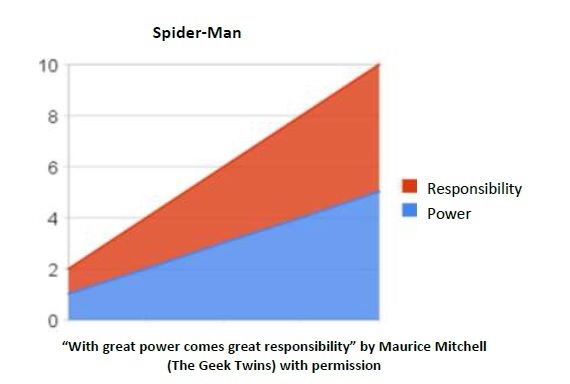
In most cases you can avoid unpleasantness when working with
copyright material by thinking about what you’re doing and, by acting in
good faith, always citing your sources and attributing creators/rights
holders. Although copyright can be seen as a system of arbitrary rules,
particularly when using technology that allows the user to do lots of
exciting things that the law says they shouldn’t, it is important not to
lose sight of why it exists. Copyright is supposed to formalise a
respect for creativity, to ensure that people only use others’ creative
works with their permission, or in a way that provides a wider benefit
to society.
It’s very important to use empathy when thinking about how to use
copyright content. Consider why the material you want to use was
created, think about how you would feel if you were the creator and
somebody else wanted to use your work. People often make the mistake of
suggesting to creators that the use of their works would be good for
their ‘exposure’. This rarely goes down well – professionals see it as a
way of justifying getting them to work for free and those who didn’t
create for commercial purposes are unlikely to want wider exposure
according to someone else’s agenda. Commercial companies, like textbook
publishers aiming to sell their books to students, are likely to be
financially disadvantaged if a University makes several chapters of a
title available for free on its virtual learning environment (VLE). This
is because students won’t buy the book.
This isn’t really as relevant when handling the more straightforward
scenarios such as when you are relying on blanket licences (see point 4)
or using material for which you already have permission. However, if
you do need to seek permission or rely on a copyright exception,
thinking in this way will get you most of the way to choosing the right
path.
- You are not alone…
if anyone, in your Institution is taking responsibility for advising on
copyright? If you don’t know the answers to these questions, you should
ask them. The UK Higher Education Sector is very fortunate in having a
large and active copyright support community who are always willing to
help provide opinions or point people in the right direction. However it
is very useful to have someone within your Institution dedicated to
copyright support issues who can provide consistent advice. This person
would ideally be able to develop copyright policy based on the types of
questions they are asked and the institution’s attitude to copyright
risk.
This is an extract of the AUA Good Practice Guide to Copyright which can be accessed and downloaded by AUA members here and can be can be read online here. The extract is reposted with permission from the copyright holders. The introduction to this piece first appeared on the blog UK Copyright Literacy and is reposted with permission.
Note: This article gives the views of the author, and not the
position of the LSE Impact blog, nor of the London School of Economics.
Please review our Comments Policy if you have any concerns on posting a comment below.
About the Authors
Chris Morrison is the Copyright and Licensing
Compliance Officer at the University of Kent, responsible for copyright
policy, education and advice, and is also a member of the UUK / Guild HE
Copyright Working Group. He was previously Copyright Assurance Manager
at the British Library and prior to that worked for copyright collecting
society PRS for Music. Chris is the creator of Copyright the Card Game, a game-based approach to understanding copyright.
Dr Jane Secker is the Copyright and Digital Literacy
Advisor at LSE where she coordinates digital literacy programmes for
staff and students including copyright training and advice. She is Chair
of the CILIP Information Literacy Group, a member of the Libraries and
Archives Copyright Alliance and the Universities UK Copyright Working
Group, which negotiates licences for the higher education sector. She is
widely published and author of four books, including Copyright and
E-learning: a guide for practitioners, which was published in 2010 by
Facet. The second edition (authored with Chris Morrison) is due for
publication in June 2016.
Jane and Chris maintain the website UK Copyright Literacy and tweet as @UKCopyrightLit
Leave A Comment
Impact of Social Sciences – Nine things you need to know about copyright: A good practice guide for administrators, librarians and academics.








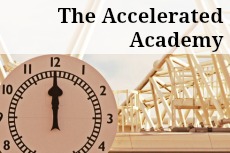


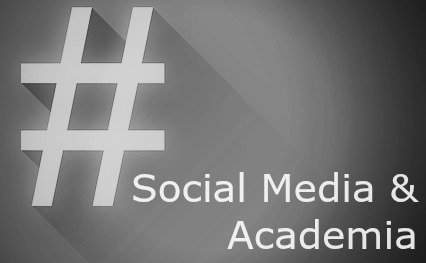
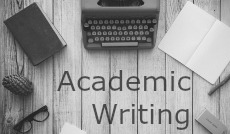
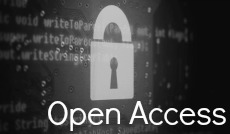




No comments:
Post a Comment